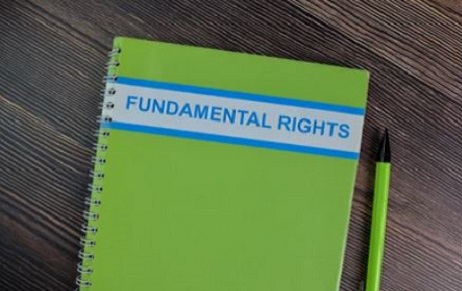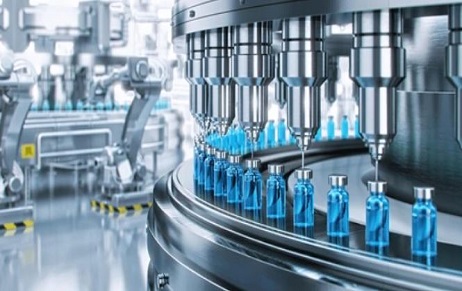Franklin D. Roosevelt (FRD) on different platforms, supported the Indian Freedom Struggle making the abovementioned…
Medical Devices: Compliances and Regulations in India
INTRODUCTION
There are around 800 producers of pharmaceutical goods and devices in India, and the country’s market is the fourth largest in Asia. The current period can be described as transitory since many regulatory changes have yet to take effect, while others are on the verge of doing so. We begin by examining the regulation in order to satisfy those demands.
REGULATORY BODIES AND IMPORTANT REGULATIONS
There are two regulatory bodies:
- Central Drugs Standard Control Organization (CDSCO) and
- Indian Council of Medical Research
The Medical Device Regulation Act of 2020 serves as the regulatory framework for medical devices. Medical devices and IVDs are controlled by the Drug Controller General of India (DCGI), which is part of the Ministry of Health and Family Welfare’s Central Drugs Standard Control Organization (CDSCO).
GOVERNING AND ALLOWING AUTHORITY
The Drugs and Cosmetics Act, 1940 (“DCA”) governs the quality and safety of medical devices in India. Only “notified medical devices” that are periodically notified by the government as “drugs” are covered by the DCA. Under the DCA, the Medical Devices Regulations, 2017 (“MDR”) were drafted. All producers, importers, and marketers of notified medical devices must adhere to these standards’ comprehensive quality criteria. The Indian Medical Device Regulations, as laid forth by the Central Drugs Standard Control Organization, must be followed by any medical devices entering India (CDSCO).The MDR was updated, and applied to all medical devices as of April 1, 2020 (“Newly Notified Medical Devices”). Only 37 kinds of medical equipment were regulated prior to the change. To get the registration certificate, medical device -Management Systems – Requirements for Regulatory Purposes).
According to a recent notification, from April 1, 2020, medical devices that meet the following definition will be regulated as drugs under the “DCA and MDR”: “All devices, including an instrument, apparatus, appliance, implant, material, or other article, whether used alone or in combination, including software or an accessory, intended by their manufacturer to be used specially for human beings or animals, which does not achieve the primary intended action in or on the human body or animals by any pharmacological, immunological, or metabolic means, but which may assist in its intended function by such means for one or more of the aforementioned-
(i) Diagnosis, prevention, monitoring, treatment, alleviation, or assistance for any disease or disorder;
(ii) Diagnosis, monitoring, treatment, alleviation or assistance for, any injury or disability;
(iii) Investigation, replacement or modification or support of the anatomy or of a physiological process;
(iv) Supporting or sustaining life;
(v) Disinfection of medical devices; and
(vi) Control of conception
The MDR Amendment (April 2020) makes two significant adjustments to MDR.
- The addition of a new chapter to allow producers and importers to register Newly Notified Medical Devices as mentioned above.
- The 37 categories of existing regulated or notified medical devices established under the new chapter are exempt from the registration requirement.
PROCESS OF REGISTRATION
Before October 1, 2021, producers and exporters of newly approved medical devices were supposed to register with the Drugs Controller General of India (“DCGI”). Some medical devices, however, are exempt from the registration requirement because they are already regulated or have been reported to be regulated (e,g, 37 items which are existed before, refer Table 2). The government has simplified the registration procedure, and it is no longer necessary to hire a full-service marketing registration or authorisation agent. By submitting the following information, any importer or maker of Newly Notified Medical Devices will be able to register online.
- Name of the corporation, firm, or other legal entity.
- Name and location of the manufacturing facility (for devices manufactured in India only)
- Medical equipment specifications and standards (for imported devices only)
- Medical device information (generic name, model number, intended use, class of medical device, material of construction, dimensions (if applicable), shelf life, sterile or non-sterile status, and brand name only if registered under Indian trade mark legislation)
- Certificate of compliance with respect to ISO 13485 standard accredited by National Accreditation Board for Certification Bodies or International Accreditation Forum in respect to such medical devices
- Free sale certificate from the country of origin (for imported devices only)
- A duly signed undertaking stating that the information furnished by the applicant is true and authentic.
The registration number is issued when the documents are submitted online. Only when a registration number is generated successfully will the registration be complete. The new amendment’s registration deadline declaration for newly notified medical devices is October 1, 2021. Until registration is acquired, the importer or producer will be unable to promote and sell their newly notified medical equipment in India.However, there are 37 kinds of medical devices that were regulated or notified before to February 11, 2020 and are exempt from the new rule’s registration requirement, allowing them to continue operating under the licence issued by the relevant licencing body.
Every producer and importer who receives a registration number for their medical equipment must show the number on the label. The declaration of a registration number, on the other hand, has no bearing on the registration deadline (October 1, 2021). Unless DCGI orders otherwise, labelling is an urgent obligation that will begin as soon as the registration number is provided.
IMPLEMENTATION OF ISO-13485 IN NEWLY NOTIFIED DEVICES FOR REGISTRATION REQUIREMENT
A certificate of compliance with ISO-13485 (Medical Devices – Quality Management Systems – Requirements for Regulatory Purposes) is required for registration of a Newly Notified Medical Device. A registered importer or maker of a medical device should adhere to ISO 13485 criteria at all times. ISO 13485 is responsible for the establishment, documentation, and execution of a quality management system, which must be amended from time to time by an independent audit.
WHAT HAPPENS WHEN LICENSE IS NOT OBTAINED ON TIME?
If a maker or importer of a newly reported medical device does not get registration on time the DCGI halts its operations until registration is secured. Under the Legal Metrology (Packaged Commodity) Rules of 2011, the importer or manufacturer of all medical devices (whether regulated or unregulated) must now state the date of import or production on the device’s label. As a result, all devices made or imported must be tagged with a DCGI registration number. If it fails to display the registration number, DCGI or the applicable state licencing authorities will take action. If a breach of the MDR is discovered, a criminal prosecution with a sentence of imprisonment and a fine may be issued. Any stockpile of medical devices sold without a licence or registration might be confiscated.
The new MDR 2020 regulations ensure that every medical equipment, whether made in India or imported, is subjected to quality control before being distributed or sold on the market. The government has also provided the industry enough time to implement ISO 13485 and quality management systems. The timetable for acquiring a licence and registration for medical equipment, including previously uncontrolled medical devices, will provide pharmaceutical corporations a break. Now it is up to the industry to play its role in reinforcing the Indian consumer’s and worldwide community’s confidence in the quality and safety of medical devices marketed in India.
Author: Ayushi Pandey – a student of Dr. DY Patil Law College (Pune), in case of any queries please contact/write back to us via email vidushi@khuranaandkhurana.com



